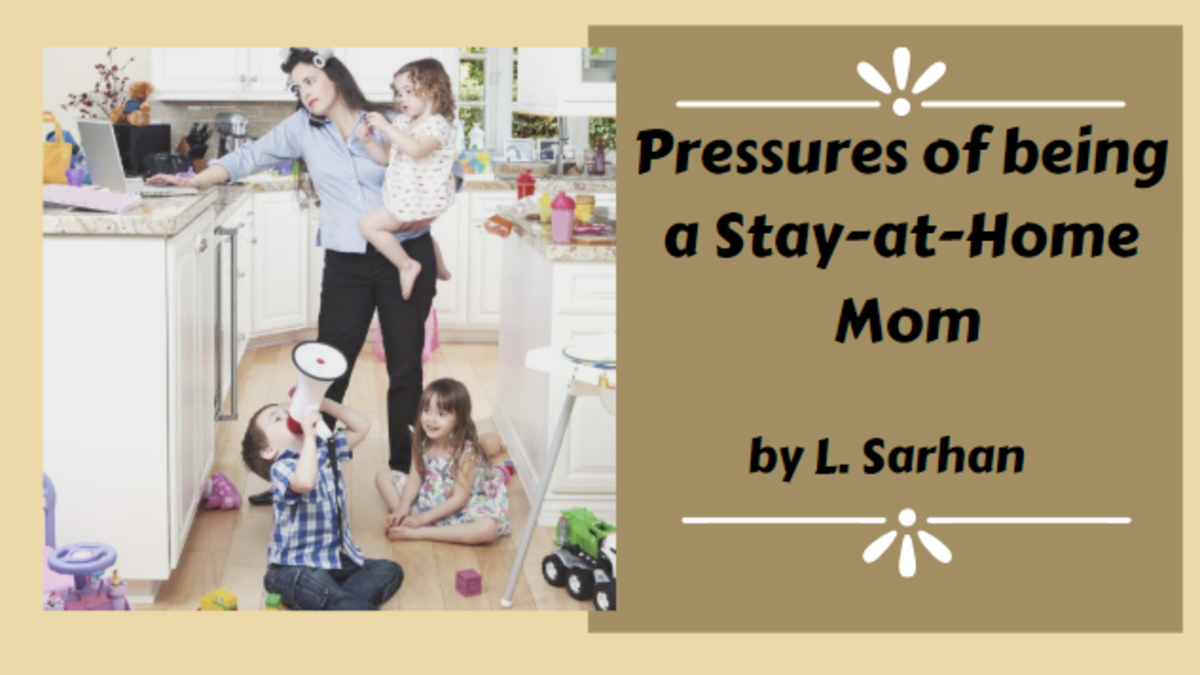The Mommy Wars: Round Three: Cry It Out or Don't
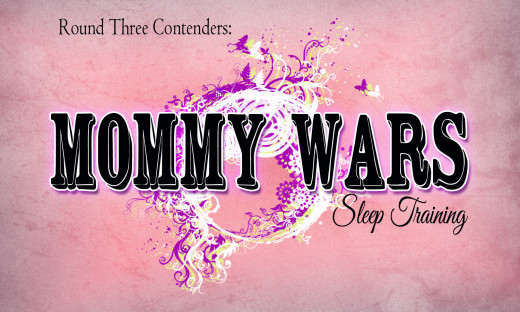
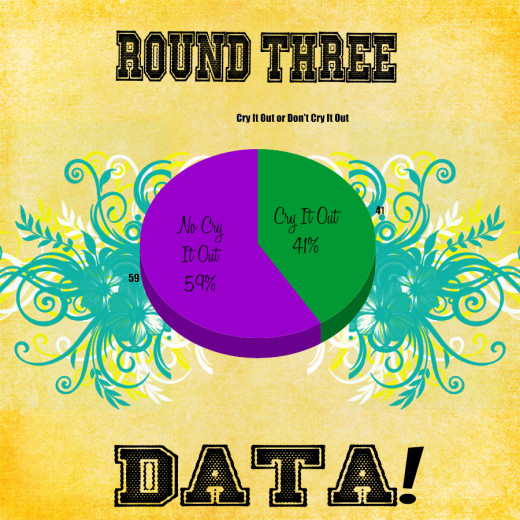
What This Battle Is About
Cry It - The cry-it-out method is a term used to describe a type of 'sleep training' for babies. This method involves allowing a baby to cry for a pre-determined time in order to assist baby in self-soothing when it comes to sleep.
Not Crying It Out - This method is just what it sounds like. Instead of using the method of allowing baby to cry it out at bedtime, this method for 'sleep' is for the opposite. Instead parents that choose not to cry it out may employ other forms of sleep techniques such as rocking, nursing, and patting a child to sleep.
Conclusion of the Survey
In the conclusion of the survey, the battle between whether or not it is best for baby to utilize the cry it out method has a larger margin leaning toward opposing the practice of crying it out when it comes to helping baby develop appropriate sleep behaviors.
This particular battle has more heated opinions one way or another. In the grand scheme of the 10 battles were are discussing in this series, it would seem the topic of crying it out has hit quite a nerve on both sides, though more so on the side of opposing the method of sleep training.
Those who oppose the idea of sleep training or 'crying it out' are said to feel this will damage a child's sense of security. The popular opinion is that this practice fosters a lack of nurturing your child and teaches your child not to expect you to be there when they need you most. Furthermore, there are strong opinions for opposing this tactic in parenting choices as being cruel and that parents are teaching their kids their feelings aren't important and can be considered, in some cases to be ignoring a child's needs or more harshly coined as neglectful.
On the other side, crying it out has been fervently praised for helping babies develop better sleep habits and healthy sleep behaviors. Frequent comments on the survey state that it is good for children to be able to 'self-soothe' and they are able to understand delayed gratification, in that babies don't necessarily need to get what they want - when they want it. In many schools of thought, the method of allowing a child to cry it out can help everyone in the house get more sleep during those months when baby is hard to get to sleep and parents are fully exhausted.
This particular battle brought up a lot of grey area and extremes when it came to responses. There was a third option that was brought up frequently - known as 'modified cry it out'. This was rather telling, as the 'modified cry it out' method is generally the same as the normal cry it out method in it's design.
The normal cry it out method was designed to allow a child to cry themselves to sleep to learn to self soothe. That's the impression that most people come to, automatically. However, further research into the actual method, you learn that Ferber; the scientist who first initiated this method; never advocated simply leaving a child in a room to cry. In fact, the actual guidelines were set up as "allowing a baby to cry for a specified amount of time before caregiver offers comfort." Which is essence is what 'modified cry it out" was explained in the responses to this question.
So that brings up the question of what is truth and what is fiction when it comes to this battle. If the main opposition of this is allowing a baby to cry and not ever doing anything to comfort the child, that's not the actual definition of this method.
Overall, the comments on this battle were more flamed with one side or another creating a hostile opinion of the other side. This particular battle did raise a lot of harsh criticism of the person on the other side of the line. There wasn't really a grey area when it came to which parenting style was right or wrong. It was very black in white, in terms of you are right and he is wrong mentality.
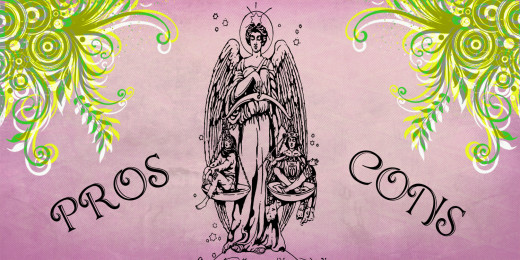
Weigh In On The Debate!
Did you Primarily Use Cry It Out or No Crying It Out
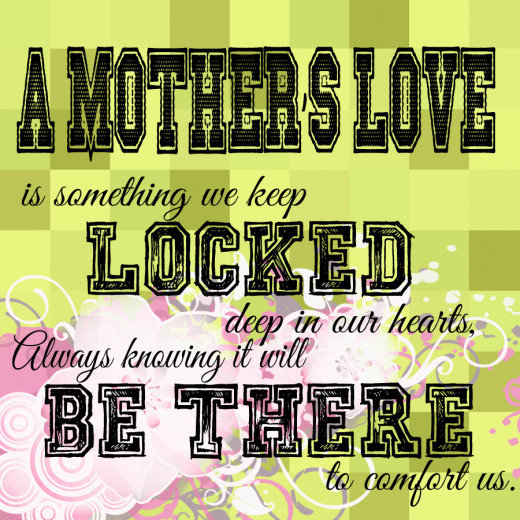
Pros and Cons of Cry It Out
PROS:
- The primary advantage to the cry it out method is parents are able to set a boundary expectation to the child in that, the child will begin to understand that they are able to cry when they are wet or in some sort of need, but perhaps not to replace the pacifier in their mouth for the TENTH time in an hour.
- It is important for a child to learn how to delay their gratification, it may, in some opinions, help later in life with toddlers and adults. The cry it out method is a good tool to use in order to show a child that when there is nothing wrong, they are able to care for themselves and their frustrations are okay to have, but need to be worked out on their own.
- Crying it out is attributed to giving children more independence, in that they are taught to 'self-soothe' themselves to sleep. They are taught to find their own way to sleep and in some cases, if a family can stick to it, given the responses on the survey, the child is immediately a good sleeper going forward after the crying it out exercise.
CONS:
- Crying it out can be hard on the parents. The idea of hearing your child cry and not going into the room to assist in comfort, should and will, pull on the heartstrings of all mothers who have that mothering instinct. It is quite a hard thing for a parent to do and in most cases, it's the 'last resort' method.
- Some believe that this method is damaging to a child's psychological well being. The crying it out method, if the child can be interpreted, may allow a potentially scared and stressed out child to lie in a dark room by themselves for a pre-determined period of time. Some have been known to say this can leave a child emotionally damaged from the stress and lack of comfort.
- Allowing a child to cry without being soothed at all, which remember is not the proper way to do this exercise, can break the trust level and bond between the child and the mother. This is because the child may feel as if their needs aren't being met and the mother is neglecting their need for comfort.
Pros and Cons of Not Crying It Out
PROS:
- Using other methods of developing sleep habits such as soothing, rocking, and nursing a child can be seen as increasing and strengthening the bond between mother and/or parent and baby. The idea of keeping the child in arm's length and keeping in their needs and wants and fostering a since of instant gratification can help a child know that their caregivers are to be counted on and trusted to look after their needs and wants.
- Depending on the method a parent uses, the no cry solution is usually associated with increasing a child's confidence in their surroundings and making sure the child feels important, which can foster higher self-esteem in a child.
CONS:
- There are some 'experts' who have attributed a high level of cortisol in the cry it out method to an increase in stress to the brain of a baby, which can cause damage to the brain. Studies tend to contradict each other on this, but it is common opinion of those opposed to cry it out that the effects of this method are damaging to a child's brain physically and mentally.
- Using the no cry solution may be hard on the sleep habits of a parent or caregiver. The health and well being of a baby is important, however an exhausted parent is no good to anyone. Some may argue that it can be damaging to the parent or caregiver to be in a no cry situation, where they are at the beck and call of their baby.
- There are some schools of thought that would say the "no cry solution" creates dependent babies who grow up to be clingy and needy in the future. It could be said that these same children are considered spoiled and used to getting what they want, when they want it. If this is true or not has yet to be definitively proven, but it is something that could be a possible side effect of the no cry solution.

Comments From Both Sides
- "I've read too many studies about how CIO can damage babies, even reducing their IQ. It would go against every fiber in my being to just let my baby cry without me helping her."
- "There is no reason why my child should have to cry it out. The child does not have the cognitive skills to understand why they are left alone to cry. Instead of allowing the child to cry, we work on ways of expressing what the child wants."
- "Cry it out, within reason, of course. I wouldn't leave my kid alone to scream or anything, but a few minutes of fussing never hurt anyone and learning to self-sooth and go to sleep on their own is important."
- "Cry it out primarily. Babies are smart and train the parent by cries! The parent should choose wisely which cries to respond to show baby communication. If you respond to every cry by giving in, baby will always know to cry to get their way!"
- "I couldn't listen to her cry - but that's *my* problem, not hers. I don't judge people who sleep train."
- "I believe my boys sleep through the night because we did cry it out. It was the hardest thing I ever did but it was the BEST decision I ever made hands down! I truly believe that parents with children who do not sleep through the night on a regular basis never let their child cry."
- "We did not CIO. Children will sleep through the night when they are ready. It is cruel to force them to do so before they would naturally. It does not train them to sleep, but trains them to give up."
Want to Learn About The Other Battles?
Go back to the homepage of this web series by clicking here.







